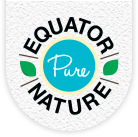

Allergy and Asthma Rates are Exploding
In the United States, allergies are exploding, as allergies
and asthma strike 1 out of every 5 people, or approximately
60 million Americans, and these rates have dramatically
increased over the last few decades.1 Allergic
dermatitis has increased 3x in U.S. children from the 1960s
to the 1990s.2 Asthma rates in U.S. children doubled
from 1980 to 1995.3 By 2025, it is expected that
worldwide the number of people with asthma will increase by
33%.4
Similar trends are being seen throughout Asia, particularly
in cities. For example, in Thailand, in 2013 it was estimated
there were 18 million Thais with allergy symptoms5
and that approximately 50% of children living in greater Bangkok
have allergies.6
The cause of such skyrocketing allergy and asthma rates?
Our belief – Environmental Triggers, and particularly
environmental triggers in the home.
Numerous sources, including articles noted below, have
linked chemicals commonly used in the home to allergies,
asthma, contact dermatitis and other issues.
These chemicals can be found in common cleaning products,
fabric softeners, home care products and personal care products.
We seek to improve people’s lives by promoting the replacement
of chemical/synthetic cleaning products with natural,
healthy cleaning products.
By replacing today’s common household chemical cleaning products
with natural products, we believe we can help reduce the
rates of allergies and asthma and decrease chemical
contamination of our environment.
1. Source: Asthma and Allergy Foundation of America.
2. Source: http://www.achooallergy.com/allergy-statistics.asp
3. Source: http://www.cdc.gov/nchs/data/ad/ad381.pdf
4. Source: World Health Organization.
5. Source: The Allergy Asthma and Immunology Society of Thailand.
6. Source: Doctor interviews at Bangkok area hospitals.
We encourage you to read the articles noted below :
Manufacturers and Distributors promising to get rid of potentially hazardous chemicals in common household products. Johnson & Johnson, in response to consumer pressure, removing certain chemicals (formaldehyde and 1,4 dioxane) from its products. Walmart announced that it would eventually require suppliers to reduce or eliminate 10 chemicals from cleaning and personal care products. Target has said it would monitor suppliers’ use of potentially harmful chemicals, then give incentives to companies that use safer chemicals. Procter & Gamble has promised to eliminate phthalates and triclosan, whose safety has also been questioned, by the end of this year [2014].
Source: http://www.nytimes.com/2014/01/18/business/johnson-johnson-takes-first-step-in-removal-of-questionable-chemicals-from-products.html?_r=1
Fabric softeners typically contain quaternary ammonium compounds. Quaternary ammonium compounds have been associated with numerous health problems, including allergies, asthma, respiratory issues, and contact dermatitis. Environmental Working Group ranks quaternary ammonium compounds with its lowest rating (an F), which it defines as “Highest Concern” “Potentially significant hazards to health or the environment” with “High Concern Skin Allergies & Irritation” and “High Concern Environment” “…potential for skin irritation/allergies/damage; acute aquatic toxicity; respiratory effects”.
See http://www.ewg.org/enviroblog/2011/11/dont-get-slimed-skip-fabric-softener
Ingredients found in common household products potentially hazardous. “…the Campaign for Safe Cosmetics, a coalition that includes the Environmental Working Group, analyzed the contents of dozens of products for children and found that many items contained two substances of particular concern: formaldehyde and 1,4 dioxane. Consumers won’t find either listed on the back of their shampoos or lotions because neither is technically an ingredient. Formaldehyde, which last year was identified by government scientists as a carcinogen, is released over time by common preservatives like quaternium-15 and DMDM hydantoin, which do appear on labels. And 1,4 dioxane, which has been linked to cancer in animal studies, is created during a process commonly used to make other ingredients gentler on the skin.”
Source: http://www.nytimes.com/2012/08/16/business/johnson-johnson-to-remove-formaldehyde-from-products.html
“On average, 17 VOCs (volatile organic compounds) are emitted from common fragranced U.S. household consumer products. About 20% of these VOCs are classified as toxic or hazardous under U.S. federal laws.
Source: Steinemann AC, et al., “Fragranced Consumer Products…”; Environ Impact Asses Rev (2010), doi: 10.1016/j.eiar.2010.08.002.
“About one of every seven of the 82,000 chemicals registered for use in the U.S. personal care products contain carcinogens, pesticides, reproductive toxins, endocrine disruptors, plasticizers…”. Source: Environmental Working Group.
Source: http://www.ewg.org/skindeep/why-this-matters-cosmetics-and-your-health/
A type of quaternary ammonium compound called Quaternium-15 has been listed as an allergen under the U.S. FDA approved patch test (http://www.truetest.com/commonallergens.aspx) and by the European Society of Contact Dermatitis (http://www.escd.org/aims/standard_series/European_Standard.pdf).
“Procter & Gamble Agrees to Reduce Carcinogen in Tide.” “Procter & Gamble has agreed to reformulate Tide and other popular laundry detergents to reduce contamination with 1,4 dioxane, defined as a carcinogen by California consumer product safeguards known as Proposition 65.”
Source: http://www.ewg.org/release/procter-gamble-agrees-reduce-carcinogen-tide
“Fabric softeners may contain quarternary ammonium compounds (quats) and imidazolidinyl, both of which are known formaldehyde releasers. For about 5% of people, quats are an extreme sensitizer. They may cause a variety of asthma-like symptoms, including respiratory arrest. Exposure to formaldehyde can cause joint pain, depression, headaches, chronic fatigue and a variety of other symptoms. In lab tests formaldehyde has caused cancer and damaged DNA. Both quaternium and imidazolidinyl can cause contact dermatitis.”
Source: http://lesstoxicguide.ca/index.asp?fetch=household
Laundry Detergent. “Most detergents are derived from petrochemical ingredients… Many liquid brands contain ethoxylated alcohols which can be contaminated with carcinogenic 1,4-dioxane… Petroleum-based detergents cause more household poisonings than any other household product.”
Source: http://lesstoxicguide.ca/index.asp?fetch=household
HESIS (The Hazard Evaluation System and Information Service (HESIS) is responsible for monitoring emerging chemical hazards in the California workplace. Chemical Watch List March 2011: “Quaternary ammonium surface disinfectants… In a recent multi-state study quaternary ammonium compounds were the leading chemical class implicated in disinfectant-related illnesses in health care workers.”
Source: http://www.cdph.ca.gov/programs/hesis/Documents/ ChemWatchList2011.pdf
